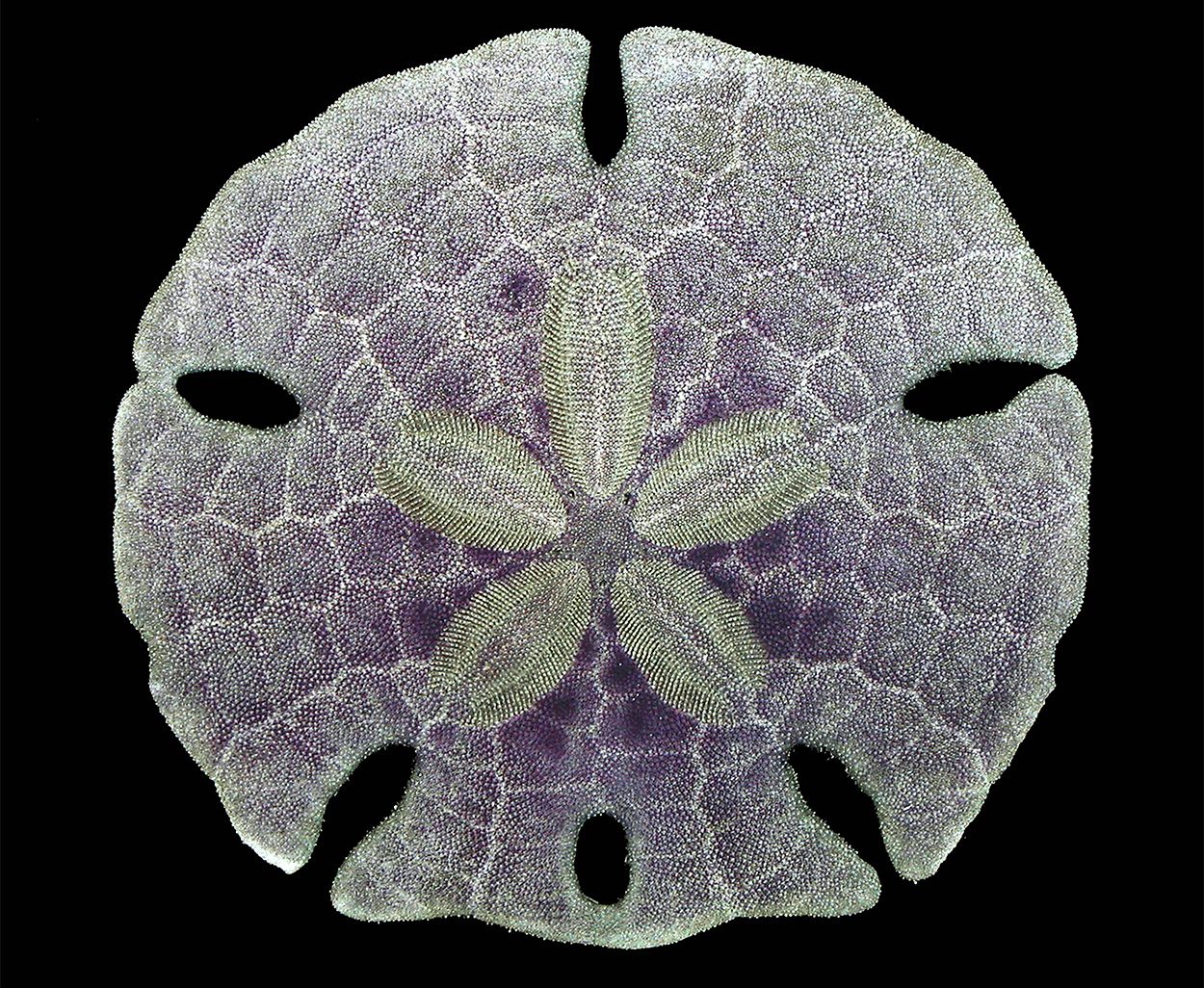
The coin-shaped sand dollar looks like it has a starfish on its back. But the five-petalled structures are part of its body and are responsible for breathing.
The sand dollars found in some areas on the beach resemble at first glance a fossil flower or a petrified prehistoric creature. However, these are the calcareous skeletons of a special group of sea urchins. Unlike many of their relatives, they are not spherical and their spines are greatly reduced. Instead, the surface of these disk-like sea creatures, also known as sea cookies, is covered with fine, flexible hairs. Shown here is a sand dollar of the species Mellitella stokesii.
Sand dollars (Clypeasteroida) are found primarily on flat sandy coasts of North and South America, but some species are also found on the coasts of Siberia and Japan. The echinoderms move around the sea floor, grazing organic particles and algae from the sediment. When threatened, they burrow into the seabed.
Because the hard calcareous skeletons of sand dollars and other sea urchins stand the test of time, extinct forms have left numerous fossils over millions of years. Despite the impressive number of fossils, only a few of the fossils have been associated with known species, so that the phylogenetic history of the sea urchins is largely unknown.
Nicolás Koch from Yale University in the USA have now chosen a new approach to master this task. They combined large amounts of sea urchin genomes into a database and identified the mutations that have accumulated in the genomes of the different sea urchin groups over time. These changes in the genome work like a ‘molecular clock’, revealing when a new species has split off due to an accumulation of mutations.
The analyzes date the beginnings of sea urchins to a much earlier time than previously assumed, namely 300 million years ago. With that, these marine animals would have survived the largest mass extinction of their age, which wiped out 95 percent of the marine species at the end of the Permian about 250 million years ago. Koch and his team suspect that this event was followed by a rapid split of the echinoids into different species. “Taken together, these results indicate that we need to re-evaluate the echinoid fossil record,” said senior author Greg Rouse of the University of California, San Diego.